A few ago weeks my parents came to Korea (before we went to Shanghai). I took them on a tour of the DMZ very similar to the one I went on with my school. About two-thirds of the DMZ tour went to the places I wrote about in my previous two blog posts.
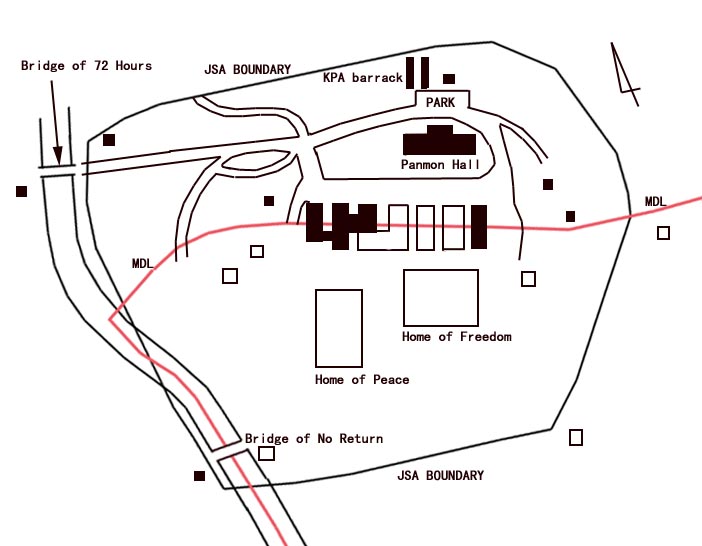
The tour I took with my parents included the highly-volatile area known as the Joint Security Area (JSA). The JSA rests within the Civilian Restritcted Zone of the Paju district of South Korea. It’s nestled up against Camp Bonifas, the United Nations Command Military Armistice Commission base where ROK army troops, U.S. Army and delegates of the Neutral Nations Supervisory Commission from Sweden and Switzerland reside.
The JSA is still technically considered a war zone and its visitors must sign waivers releasing the UN of all responsibility should a firefight break out.
Many people know this place because it was where the war-ending armistice agreement was signed between North Korea and the UN.
The 800-meter circular area was once a shared space between the KPA and ROK/UN forces. Each side could place outposts and buildings wherever they wished (on either side of the Korean border). However, after the Axe Murder Incident in 1976 the JSA was once again divided over the demarcation line like the rest of the DMZ.
At about 7 a.m. on the day of our tour, my Dad, Mom and I went to the Camp Kim USO office in central Seoul. From there, we took a 75-minute bus ride out to Paju and passed through the civilian restricted zone like I did a few months ago.
Once we got to Camp Bonifas, we got out of our buses, walked onto the base and got onto a ROK-approved tour bus where we were taken to Ballinger Hall. For being so close to North Korea, Camp Bonifas had a very relaxed feeling. As it was once described in a magazine, it looks a lot like a Boy Scout Camp with guns. Once inside the hall, we were given a briefing of the history of the camp and the JSA. Afterwards, our armed army guide, a Pfc. Vosick from Ohio, explained to us that American soldiers are stationed at Bonifas for one year and are given a bonus to stay a second. He said many don’t stay a second year.
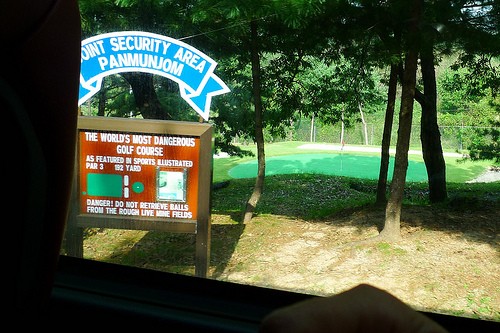
On our way to the JSA from Bonifas we passed by the “World Most Dangerous Golf Course.” We also passed through several armed checkpoints and gates heading outside of Bonifas until we reached the Freedom House, which resides in the JSA. Sadly, it has never been used for its designed purpose of reuniting estranged Korean families. Instead, the Freedom House is used to peer some 70 feet across the Demarcation line into North Korea.

Unlike Dorasan Observatory, which put North Korea at a distance, I could now see the other right side right in front of me, with a KPA guard looking right into our tour group. At first its a very unsettling feeling, then you realize that the short North Korean soldier in a brown uniform is looking across the way from close to ten South Korean MPs in their “ROK Ready” stance. It’s intense, but you know there’s protection.
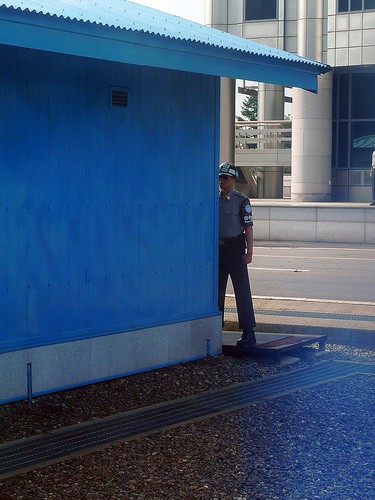
Standing at the back of the Freedom House, looking into the North, Pfc. Vosick gave us an explanation of the use of the blue conference rooms in the signing of the armistice. During his briefing, he had to stop and remind several visitors to not point at anything on the North Korean side. The speech became a little hard to follow. Vosick then explained that Panmon Hall across the way was once shorter, but after the Freedom House was constructed, the North Korean government tried to match it in size with another floor. Competition of building height is very common in the DMZ. Each side is trying to always one-up the other.
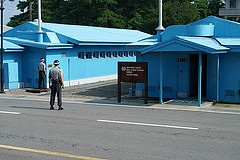
After about five minutes of taking photos from the steps of the Freedom House we were taken into Conference Room B.
Once inside, we were instructed to stay away from the door opposite of the one we entered. The dark frames of the ROK MP’s aviators did more than a good job to sway us from doing anything we shouldn’t. Inside the conference room, a large dark wooden table with a United Nations flag sat on the line between North Korea and South Korea. The North Korean conference door side was locked, so we were free to walk about a very small area of North Korean soil.
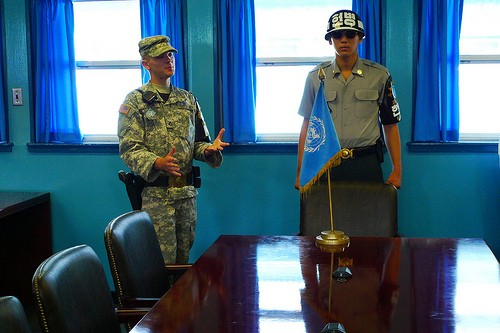
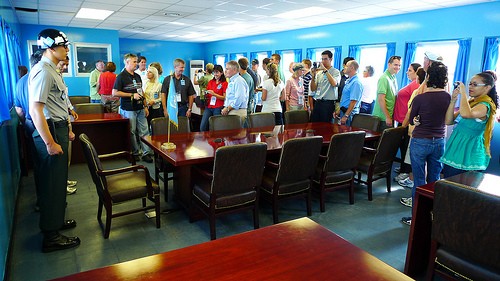
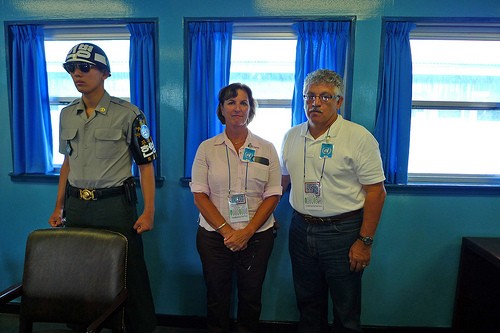

After taking our photos on the North Korean side standing next to the ROK MPs who would put any British Queen’s Guard to shame, we filed out and got one last look at the “other” side before making our way via bus to the Bridge of No Return.
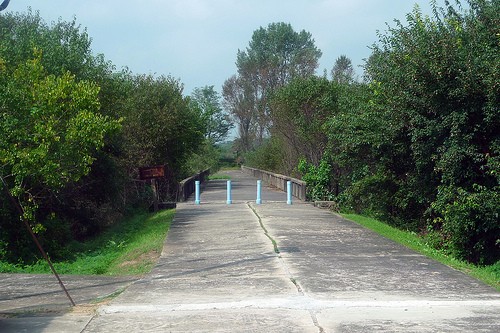
After taking a short circular route around the JSA we were driven back to the entrance of the Camp Bonifas where a gift store waited for us. The whole JSA/Camp Bonifas portion of our DMZ tour took about two hours, but it was by the highlight of the trip.
On a side note, I read that ROK citizens are not allowed to visit the JSA. Pfc. Vosick overheard me say this, and corrected my statement. He said he has seen groups of Korean tourists at the JSA and that it is certainty not forbidden.
However, our USO guide told us that while it is not forbidden, it is very difficult and time-consuming. Any Korean citizen who wishes to visit the DMZ must pass a six-month long background check. The fear is that the emotions of the Koreans would be inflamed to such a degree, that somebody try to run across the border or do something to cause and international incident.
So while it is not forbidden, it is such a hassle that many Koreans forgo the JSA portion of the tour and simply visit other places in the DMZ area.
Overall, this part of the trip was the most fascinating and scary thing I have done in Korea. The overbearing and intense feelings of briefly stepping onto North Korean soil are fun to brag about with friends, but it really does not substitute actually being in the Hermit Kingdom. My parents were able to get a crash course in the general feeling and mood of how South Koreans think about the war in relation to everyday life. I highly recommend it to anybody planning on taking a trip to Korea.
For booking information about the USO DMZ/JSA tour, check out the site for Koridoor, the agency that hosts the tours. They run about $70 USD or (90,000 KRW) for the tour. Lunch is another 7,000-10,000 won.


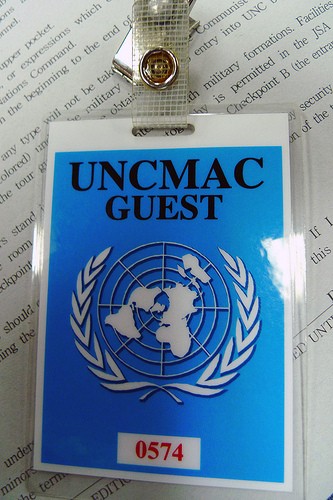
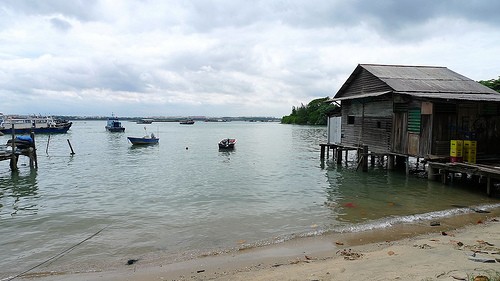
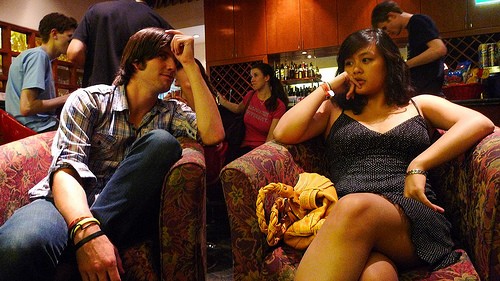
Hello! Nice information on the blog. I am just wondering if they’re still strict with the attire on getting inside the JSA tour? Seems like in the picture, some are dressed in a relaxed manner.
As far as I know, the rules are exactly the same as they are from when I went last September.